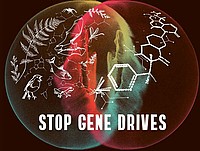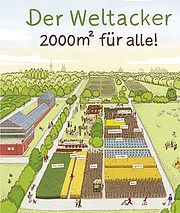EU authorized BASF's Starch-potato
 |
The European Commission has given the green light to BASF for the commercial application of its genetically modified Amflora potato. By allowing the cultivation of the genetically modified potato, the European Union now approved the planting of a biotechnology crop for the first time in more than a decade. In March the EU authorized the Amflora potato to be grown for the production of industrial starch in spite of the objections of environmental groups. BASF developed Amflora in a laboratory as an alternative thickening agent for paper, adhesives and textiles and first sought approval for cultivation in Europe in 1998. Because EU countries were split over whether to allow the planting of Amflora, which the European Food Safety Authority has said is safe, the commission gained the right to authorize on its own. A proposal of the EU Commission to approve the cultivation of EH92-527-1 was submitted to the Standing Committee on GMOs under Directive 2001/18 (deliberate release of GMOs into the environment) in December 2006 for the first time, but did not get the necessary qualified majority. On July 16th 2007 the Council Agricultural Ministers had to vote on the proposal and, again, could not agree with the qualified majority. According to the EU rules it was than up to the Commission to approve or reject BASF's application to cultivate the GM potato in Europe. The World Health Organization and the European Medicines Agency have warned about resistance to GM potato Amflora. Preceded unprecedented controversy on the mutant potato Amflora even by the European Food Safety Authority (EFSA) which normally supports the mutant. Finally, the medical community is concerned about increasing antibiotic resistance, and in 2001 the EU adopted a law which called for withdrawal to 2004 genes that are resistant to antibiotics, which can threaten human health and the environment.
Cordis report on Council decision
Friends of the Earth Europe Press release on Council of Ministers vote 16th July 2007
CorpWatch, EUROPE: A Genetically Modified Potato, Not for Eating, Is Stirring Some Opposition in Europe
Background information
The advantage of the potato, derived from the variety "Prevalent", would be to ease the extraction of starch from the potatoes, as ordinary potatoes produce two types of starch, of which only amylopectin (70-80%) is used for food and non-food purposes while amylose (20-30%) must be separated by means of chemical, physical und enzymatic processes, including the use of substantial quantities of processing water. By supressing the genes for the production of amylose the EH92-527-1 potato produces over 98% of amylopectin. Amylose is used to produce paste, adhesives, lubricants, films, building materials, synthetics and other industrial products. Roughly one quarter of all potatoes grown in Europe is already used for non-food industrial purposes, another half for animal feed and only one quarter for human consumption, which has declined consistently since the 1980s. The BASF potato supresses by means of antisense inhibition of a single gene, coding for a granule-bound starch synthase (gbss). The only known additional protein produced by the GM potato is from the neomycin phosphotransferase gene (nptII), coding for a protein giving the plant resistance to the antibiotic kanamycin. According to Directive 2001/18 antibiotic resistance markers should be phased out from commercially released GMOs by 2004. However, the European Food Safety Authorities GMO panel deemed that kanamycin-resistance could be neglected with respect to human health threats, as it was already widely spread in the environment and in humans. However, the World Health Organisation, WHO, classifies nptII as a "critically important" antibiotic. When asked by the EU Commission in 2006 the European Medicines Agency EMEA also contradicted EFSAs assessment and confirmed the critical importance of nptII in human medicine.
The construct had first been submitted for approval to the Swedish authorities by the company Amylogene in 1996. Newer varieties of starch-potatoes without an antibiotic resistance gene were tested as well.
Read more:
Royal Society of Chemistry, UK, Nov 2006
BASF touts GM spuds for starch
ISB (Information Systems for Biotechnology), Nov 2006
Searching for Unintended Compositional Changes in GE Potatoes
Food-Navigator, Feb 2006
GM potato no threat to health, says EFSA
Royal Society of Chemistry, UK, Sep 2005
Stressed GM potatoes contain increased levels of toxic metabolites
GeneWatch, UK, 2004
Comments by GeneWatch UK
Mariette Andersson, Lund University, Doctoral Dissertation, 2004
Development of Transgenic Potatoes to Attain Novel Starch Qualities
Transgen (in German)
GM potatoes
Legal documents/ Documents under Directive 2001/18 (approval for cultivation).
European Commission 9th November 2006, submitted to the Standing Committee on GMOs
Draft Commission Decision concerning the placing on the market, in accordance with Directive 2001/18/EC of the European Parliament and of the Council, of a potato product (Solanum tuberosum L. line EH92-527-1) genetically modified for enhanced content of the amylopectin component of starch.
C/SE/96/3501 Sweden Amylogene HB Potato variety EH92-527-1 with modified starch content
February 2003 Full text of the original application
February 2003 Summary notification file Public comments file
May 2004 Assessment report file Public comments to the risk assessment file
June 2005 BASF amended report on sequence and molecular structure
June 2005 BASF report on possible open reading frames
June 2004 BASF report to EFSA
European Medicines Agency, EMEA (February 2007)
Presence of the antibiotic resistance marker gene nptII in GM plants for food and feed uses
Upon request of the Commission EMEA suggests that the antibiotic marker contained in the starch-potatoe does have significant therapeutic relevance and questions the assumptions of EFSA.
Documents under Regulation 1829/2003 (approval for use as food and feed)
European Commission, 14 November 2006
Comments in consultation on the approval for food and feed
Joint Research Centre (JRC), 14 September 2006
Event-specific method to detect and quantify the EH92-527-1 potato transformation using real-time PCR
Institute for Reference Materials and Measurements (JRMM), 2006
Certification of EH92-527-1 Fraction and Identity of Non-Modified and Genetically Modified Potato Powder Certified Reference Materials ERM®-BF421a and ERM®-BF421b



